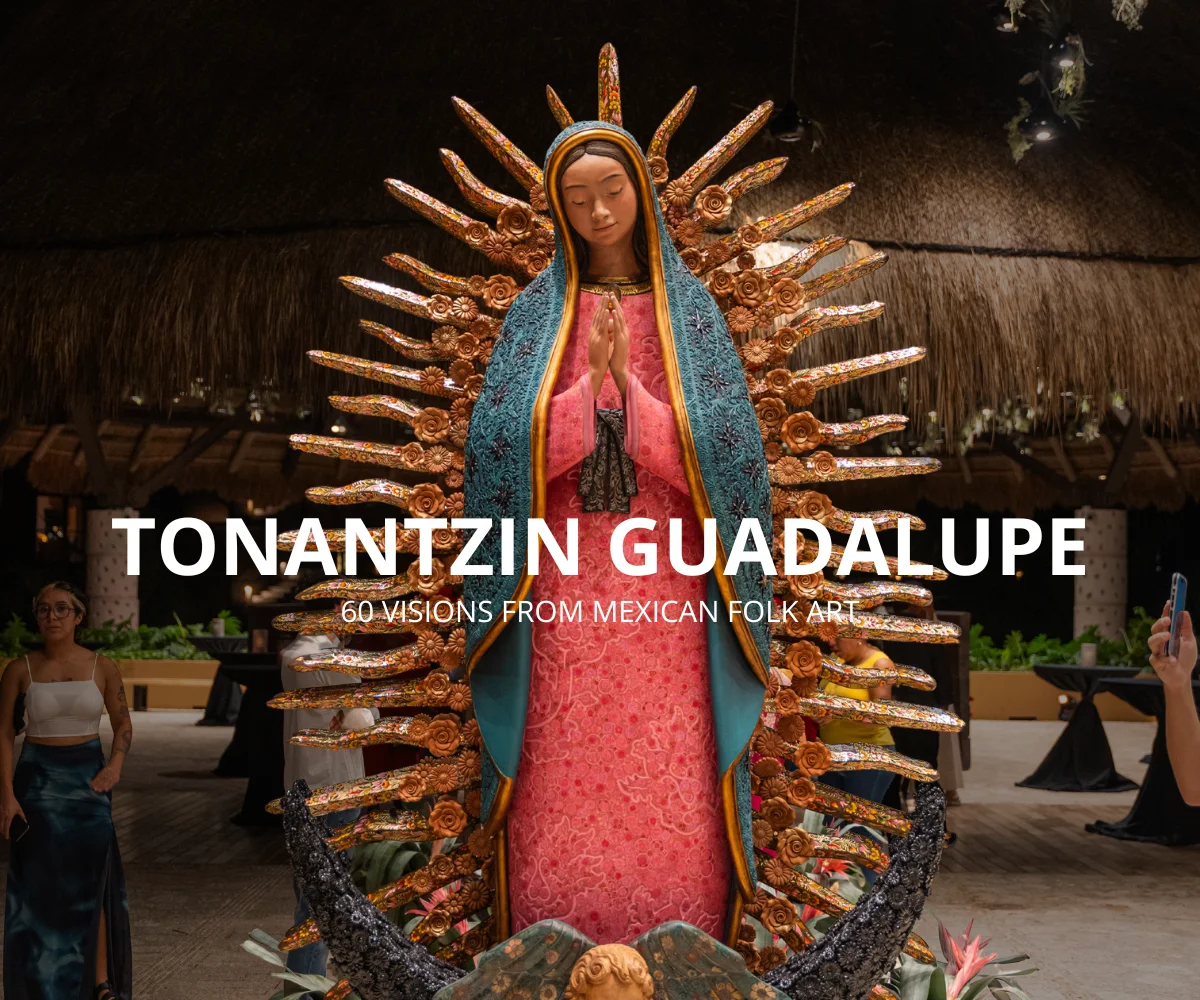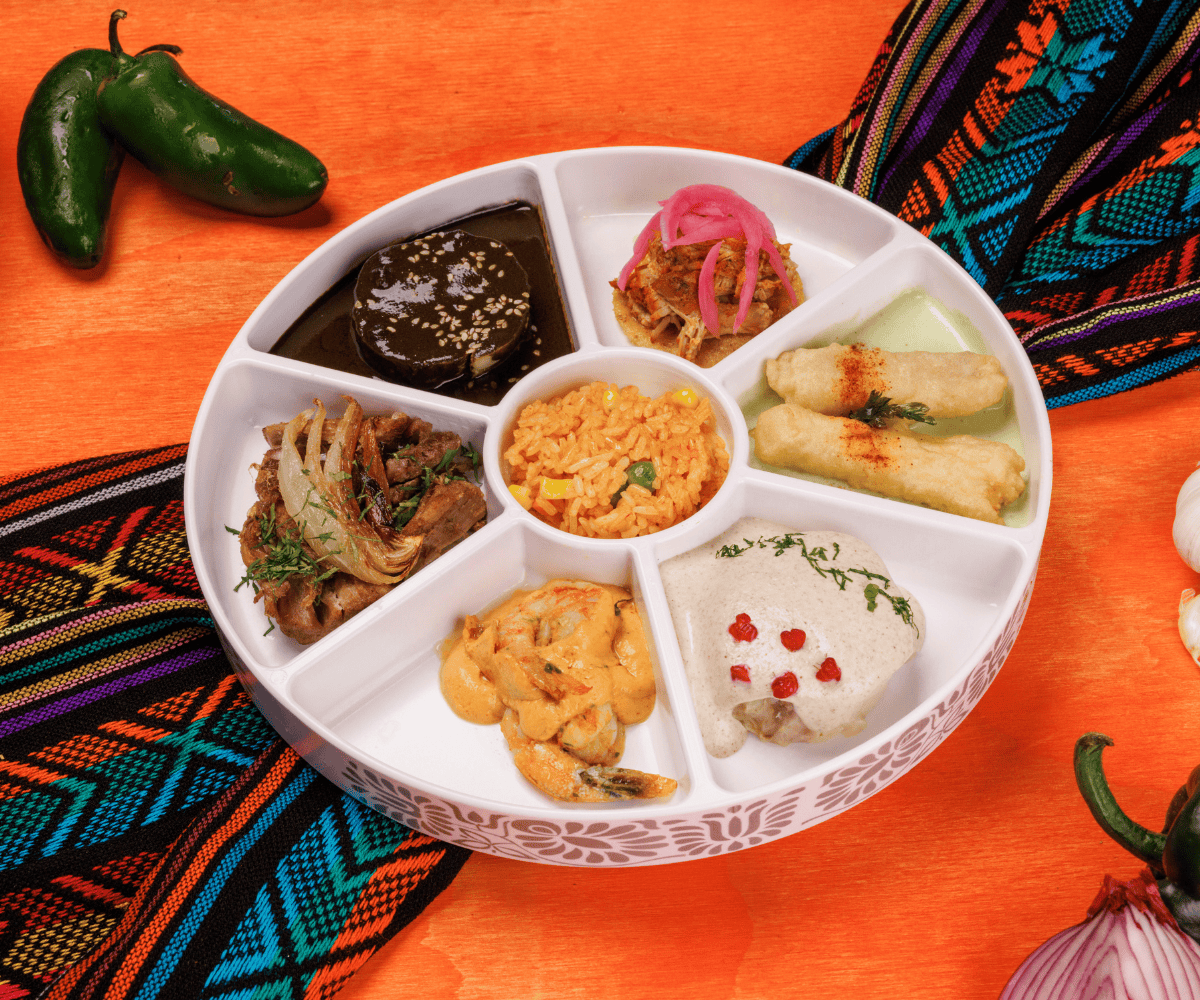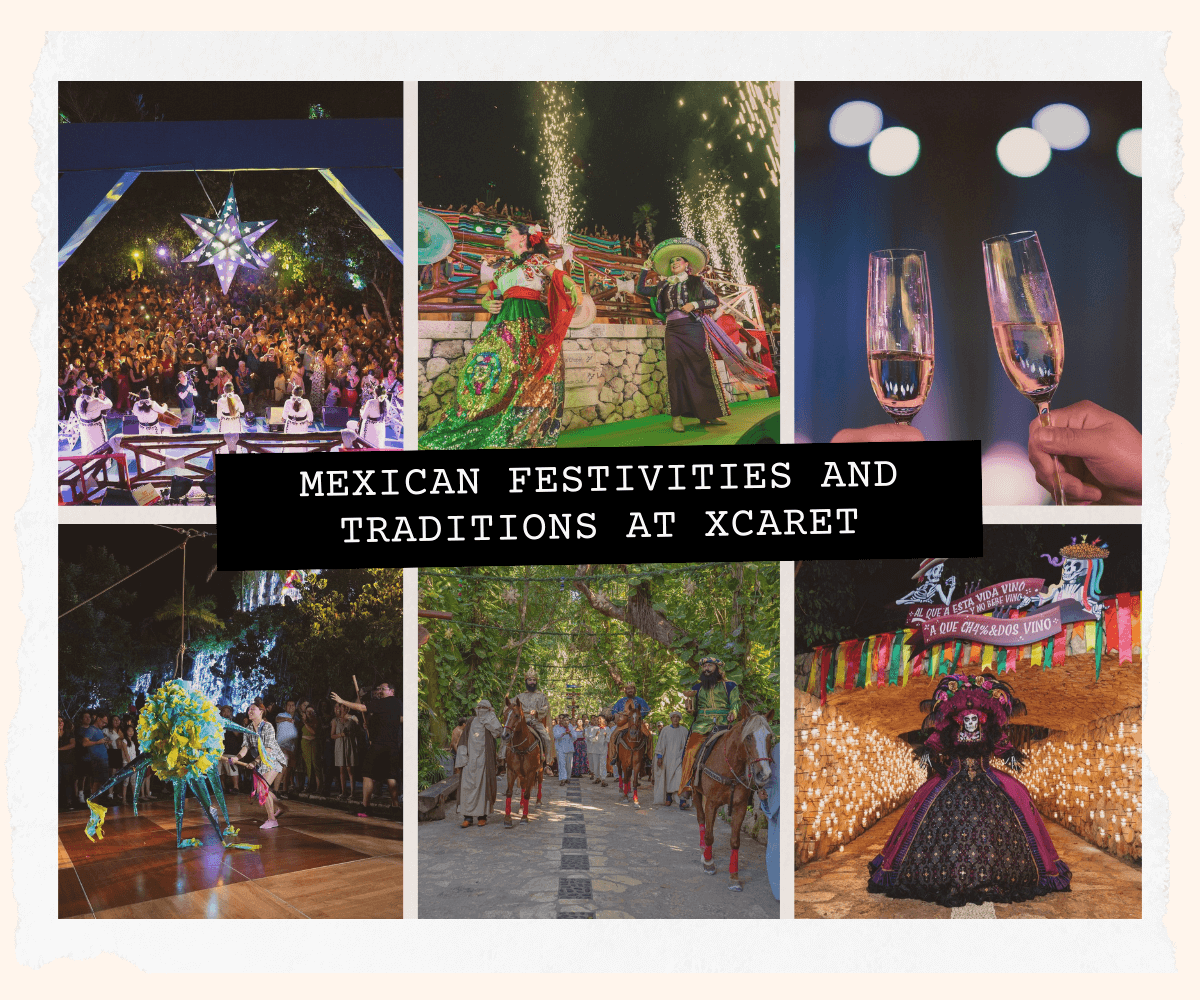10 mythological creatures of Mexico
March 09, 2024
Learn about the Mexican mythical world
Mythological creatures are part of our ancestor’s history
Mexico is a land full of mysteries and legends dating back to our ancestors. Pre-Hispanic cultures worshipped gods seeking an answer to natural disasters as well as unexplained events. From them, certain fantastic beings emerged. With time, they have been incorporated with new characteristics due to the cultural mix our country has experienced. People who claim to be witnesses of their existence have resulted in a rise of mythological creatures.
Each fantastic creature is part of the Mexican folklore so varied, curious and enigmatic. Below, I will tell you about the 10 main mythical creatures of México.
1.Alux
Alux or alux’Ob comes from the maya culture that developed in Mexico, Guatemala and Belize in which they were considered nature caretakers. According to legends, they were tiny beings older than the sun. They are related to elves in their physical likeness since their size is that of a tiny being with a mischievous character and with indigenous traits. Representations of them can be found in Chiapas at Yaxchilán and Nohoch mul, Quintana Roo in Coba.
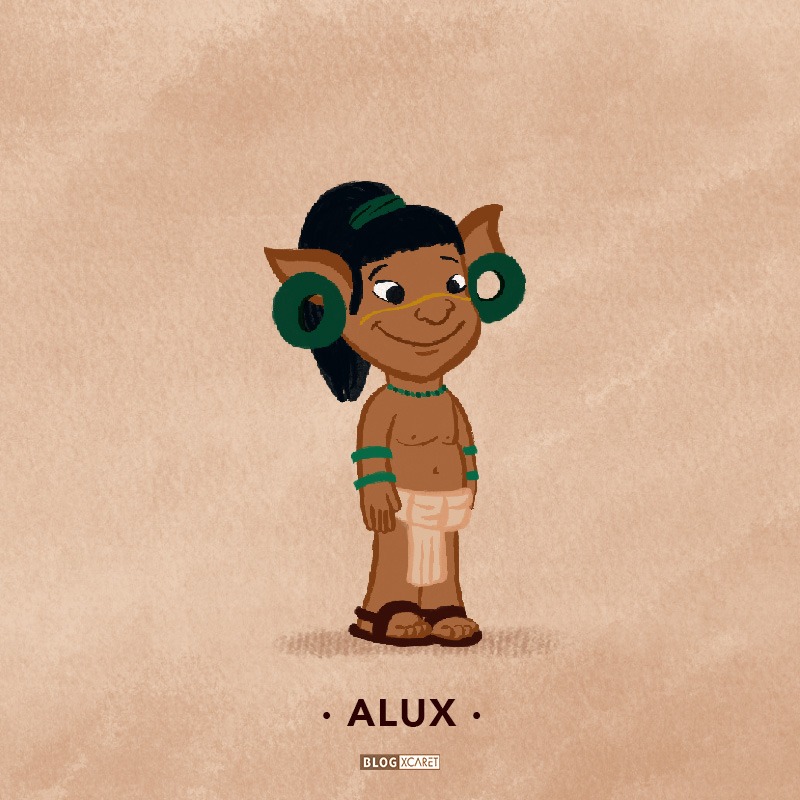
They were created by the maya wise men, also called shamans. A rituat consisted of using virgin clay extracted from a cave with which the creature was molded along with nine drops of the blood of the creature´s owner. This was intended to develop a connection between master and servant. It was the owner’s responsibility to make altars with offerings for his alux. These usually contained corn, pozole or regional grains. In return, the alux took care of the land, crops, and animals of thieves by throwing stones, making them stumble or whistling. This period of care had to last seven years.
During this time, the being could make mischief, appear in the shadows and change the place of things as a sign of fidelity to their master, but once the seven year term is fulfilled, the owner has to build a small house for them, leaving them trapped so they don’t lose control. When their owner dies, they are under the protection of the maize god Yum-Kaax, who grants them permission to take care of the land as well as the nature that resides there in the same way they take care of the subterranean world called Xibalbá.
There are currently many legends in southeastern Mexico, in which witnesses mention falling bridges, natural disasters, or diseases occurring when invading a land without asking permission or making an offering to these beings.
That is why, if you visit the Mexican Caribbean you may come across small buildings of tiny pyramids near some buildings. You may see one near the Cancun-Nizuc bridge which had many problems while being built until the small pyramid was offered so that the guardian could allow the bridge to carry on being built.
2. Dzulúm
This creature has two inquisitive stories in two different regions of México; in Yucatán, there is a story about the dzulúm that bears the name Balam,Mayan word for jaguar. In this story, we’re told that this being’s purpose is to take care of the land and crops. Its appearance is that of a man with a very long beard, as an older man. There are four of them according to the cardinal points, each protecting their corresponding properties.
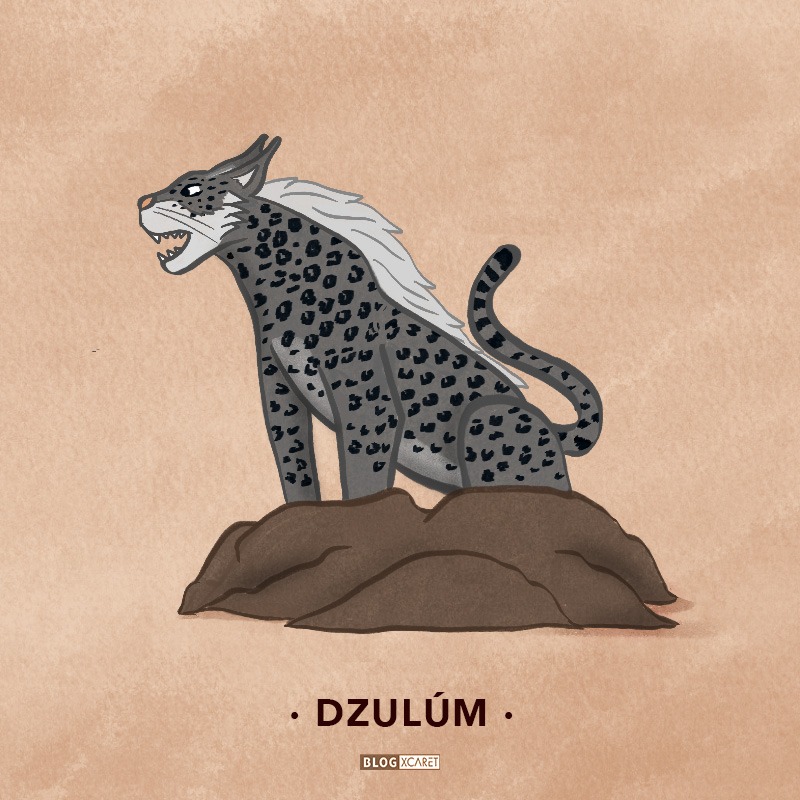
In Chiapas, the name of the creature is that of the dzulúm which means the desire to die, differing from Yucatan’s tradition, in Chiapas, it is said that this going out to protect its dominions at night, that even other felines offer it food because they are afraid of it. It is said that we don’t deserve to see its div. The few who have managed to see it or imagine him describe him as a very large feline with grey fur, spots, and white fur on its spine.
Its victims are usually women, so it is believed that it can have an irresistible attraction and it is even said that many make a pact with the creature to become witches and leave their souls behind. Today, many mention that it is the representation of suicide in ancient times.
3. Nahual
The nahual has its origin in the Nahuatl language, meaning hidden disguise. It is a creature that can transform into an animal. Often described as a sorcerer who can transform for the practice of witchcraft.
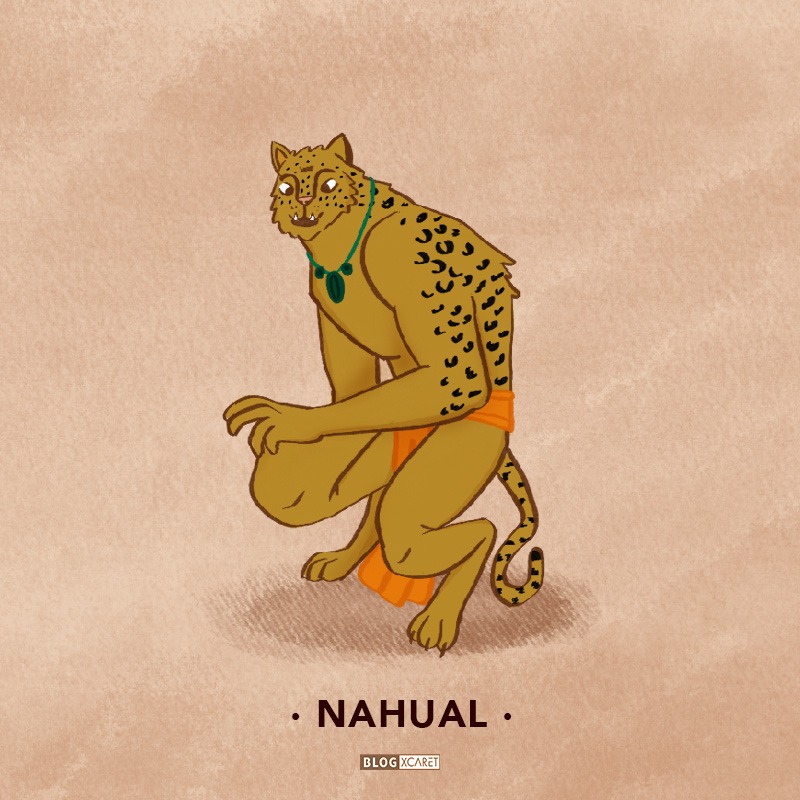
Traditions say that we are all born with an animal spirit that protects and guides us, so the nahual seeks to become them to improve their capabilities. Those who were born with the spirit of the hawk possessed the gift of good sight, wolves possessed the gift of an advanced sense of smell, so those who had the opportunity to be nahuales used their skills for their purposes, regardless of whether they were for good or evil.
The story of the nahual is full of mysteries, as some claim that they are beings who seek to understand the ancient world of the gods through nature and those who accuse them of being evil creatures.
4. Ahuízotl
The ahuizotl is a being that inhabited the Texcoco lake so it is believed to be currently extinct. It was a creature with small ears, a long tail that resembled that of a monkey’s hand, claws and sharp teeth with the appearance of a very shaped dog. The translation of its name would be “the thorny water”.
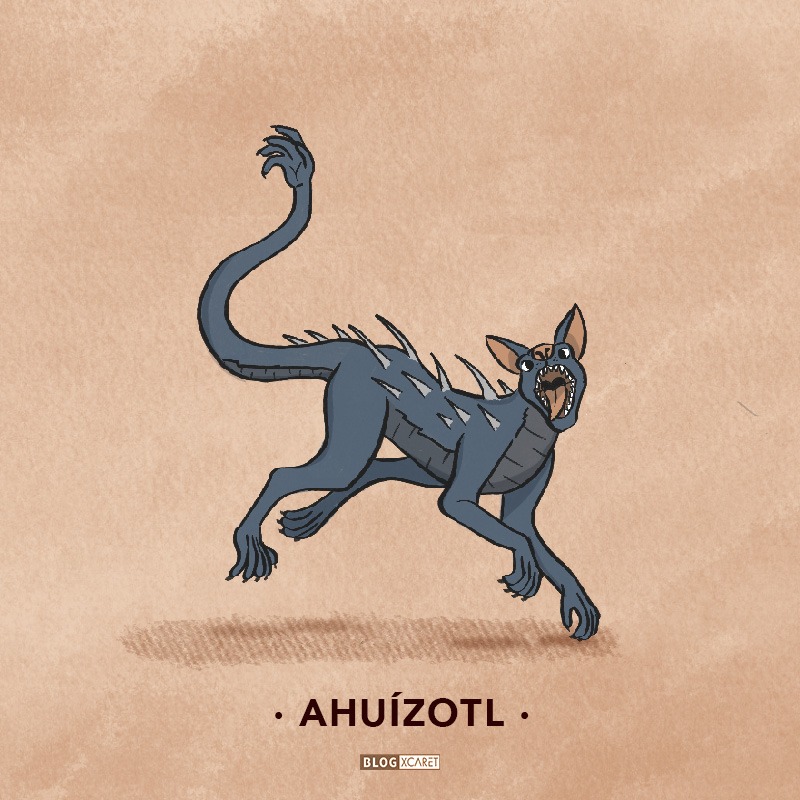
Legend has it that this was a being at the disposal of the rain gods which had the task of reclaiming the bodies of those chosen by the divine beings to possess their soul. In order to do this, the creature sometimes imitated the sound of a baby to be able to attract prey and in that instant took away their eyes, nails and teeth, then they were drowned so that the priests would have to treat the person with extreme care for their bodies as they had already been chosen by the gods.
This being usually caught fishermen by whirling in the water and sprouting fish and frogs.
5. Atotolin
The atotolin is known as the bird king of Aztec culture. It is a creature also known as a water hen. Its appearance was somewhat yellow, with a slender body and large head.
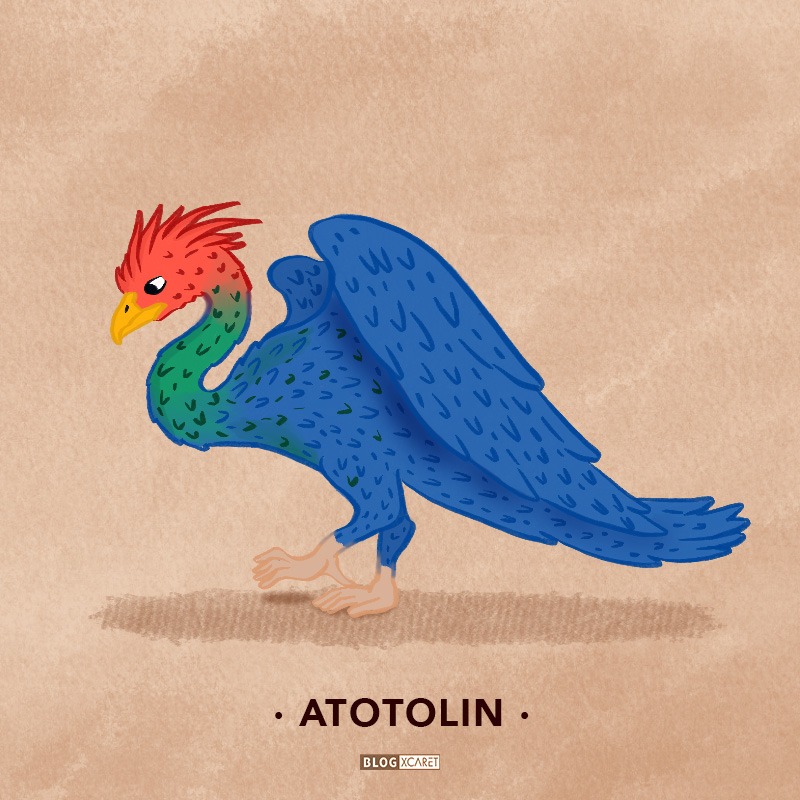
The hunting of this bird was very difficult; if on the fourth day they could not reach it, it would launch a song with strong winds that would sink canoes and stop the heart of the hunters or drown them.
If they were able to hunt it, at the moment of opening the stomach of the creature, one could know the fate of the hunter, if he found a piece of coal, it was said that the hunter would have an early death while if he found a precious stone, it foretold a good future.
6. Chaneque
The chaneques are creatures that come from the Mexicas. Their name has two translations: the first is those who live in dangerous places. The second is the owners of the house. Their appearance could change from a tiny man or woman, their footprints were white.
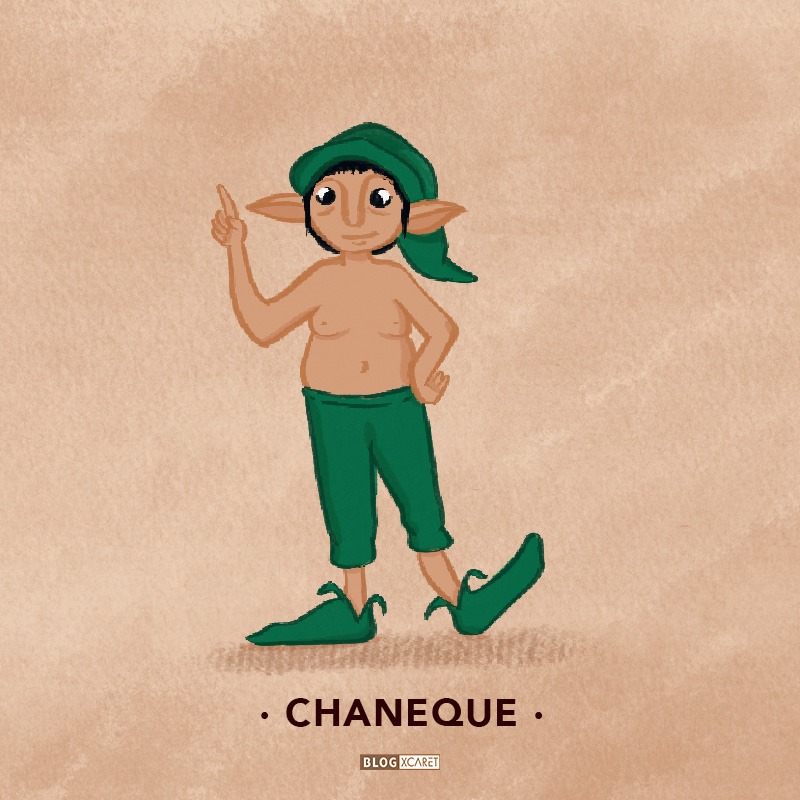
It was believed that they were beings linked to the underworld, dedicated to taking care of the mountains, forests, springs, trees, plants and wild animals and also possessed a mischievous and ingenious character.
Sometimes they stole an essential part of their soul, called tonalli, which was vital life energy, so they had to perform rituals to return it, otherwise, the person might fail. One of the beliefs said you must wear your clothes inside out while walking through the mountains so that the Chaneques wouldn’t bother you.
Nowadays the chaneques are known as tiny beings with the appearance of children who make jokes, hide things from you and can even lead people into getting lost.
7. Cipactli
The cipactli is part of Aztec mythology. Its name can be translated to “the black lizard”. It was a voracious creature often seen as half fish or crocodile, or another creature. This being is always hungry and has 18 mouths. Legend has it that Tezcatlipoca had to use his foot as bait to attract him. The gods used the body of this creature to create heaven and earth.
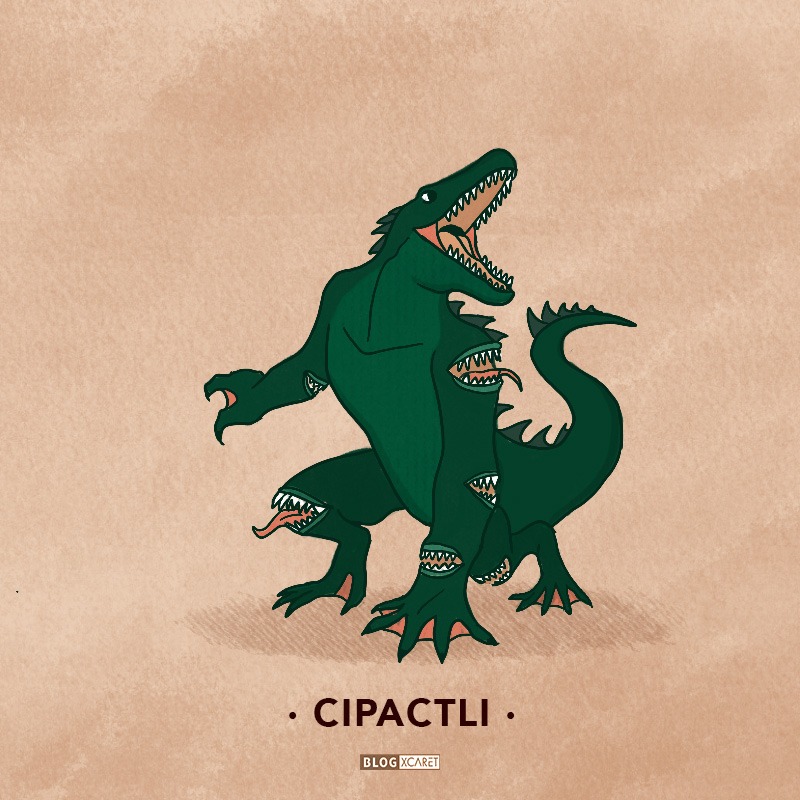
In the aztec calendar, it was given the name of the first month to represent that we are all primitive at the beginning of life but as we grow we transform into something beautiful, so the last month of the aztec calendar is called Xochitl which means flower.
8. Dtundtuncan
It is a mythological Maya creature whose name has the Spanish meaning of “the one who goes through the sky”. Its appearance is that of a blackbird with a very large beak, it has no eyes and looks like a shell because it seems to have no soul.
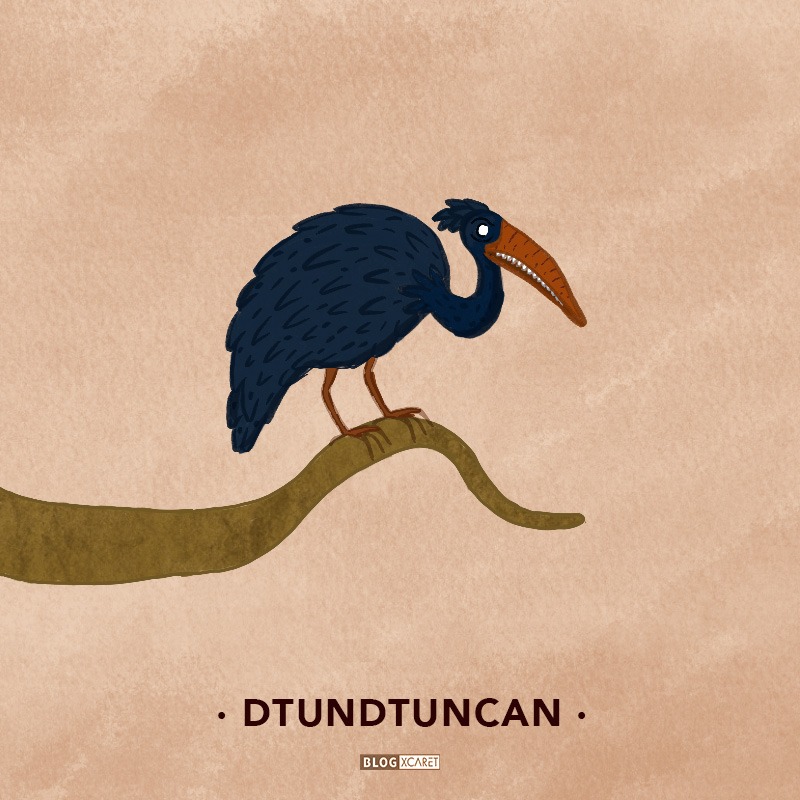
It is too much feared because it feeds on the children at night, furrows the sky until they are asleep and enters their rooms, where it approaches the mouths of the infants, to blow into their mouths a wind of death, its mere presence is an omen of death. For a long time, it was said that it lived near the pyramids of Uxmal and Chichén Itzá, but due to the passage of time, it is said that it went into the jungles.
Legend has it that once, there was a Maya shaman who dedicated himself to the healing and care of children and maidens of the place where he lived. One day, while looking for medicinal herbs, he fell in love with a maiden to whom he sang, wrote poems and gave all his heart, but the woman did not respond to his affections. The shaman then said that he would take his revenge for the humiliation he suffered.
A long time passed, the maiden became pregnant with the son of the heir to the throne and gave birth to a beautiful baby who would be the future of all the people, but tragedy filled this story when, in August, when the temperatures are warmer and the flowers begin to bear fruit, a man entered the infant’s quarters, he approached the ear singing a melodious and harmonious song that led the child to death. All the people witnessed how the flame of the future was extinguished, then other shamans and wise men cursed the shaman turning him into a soulless bird, destined to have a beautiful song but full of evil and death.
9. Tlahuelpuchi
The tlatlepuchi or tlahuelpuchi means “light perfumer”. It is a well-known creature in many regions of Mexico, being the main Tlaxcala. It is said to be a woman who likes to feed on blood and have telepathic powers.
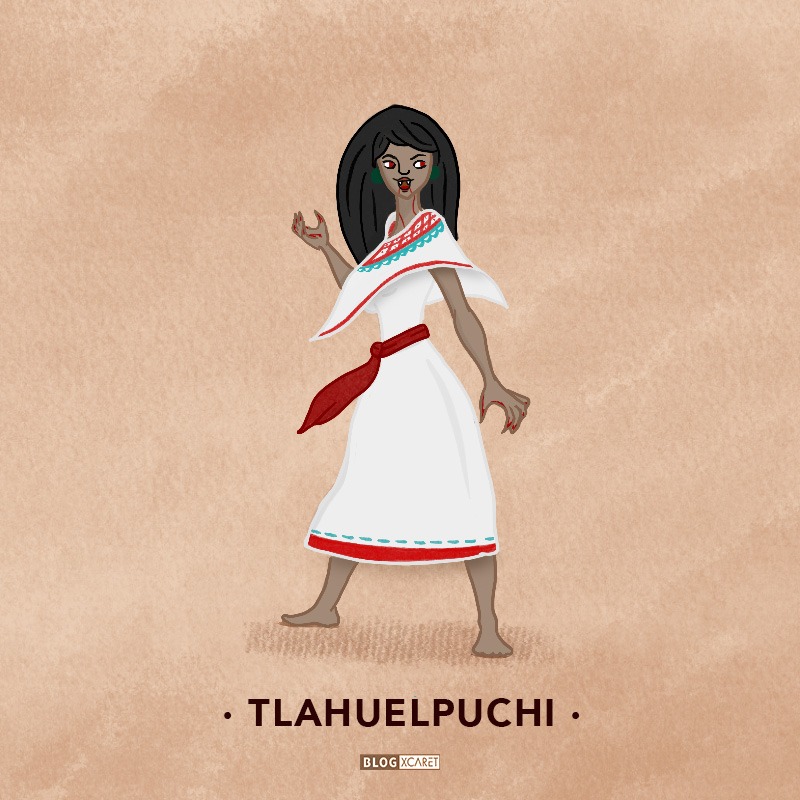
There are many stories about its origin, some mention that it is the mixture between a sorceress and vampire, others that it is a type of witch with the ability to turn into steam. It is said that its favourite food is the blood of small animals although it can also be of larger animals. Others say there are also men called tlahuelpiches.
The legend comes through the Aztecs who associated them with fireflies that spitfire, but to them, they were protective creatures transformed into evil with the arrival of miscegenation where it is believed that they were normal women who suffered some curse.
Folklore calls them witches despite some differences since the tlatepuchi can be either alone or living among us without attacking their family. It is said that their power comes since they reach youth.
Nowadays, many testimonies claim to see lights in the sky go away, so you should be very careful at night because if you run into one you could become tlatepuchi.
In Mexico, these superstitions still exist. When there’s a newborn child at home, some families put scissors under the cribs of their babies since the tlatepuchi hates metals. This has been such a well-known legend that there is a song called “la bruja” that has been performed by Mexican singers like Eugenia Leon and Lila downs.
10. Chupacabras
The chupacabras is known as an urban legend that comes from different regions of Latin America, mainly Mexico and Puerto Rico. Described as a being that attacks multiple livestock animals, its appearance is that of a wild dog with long nails and fangs which sometimes has scales or wings depending on the case. Its height is about two meters and it has some similarity in body composition with the werewolf.
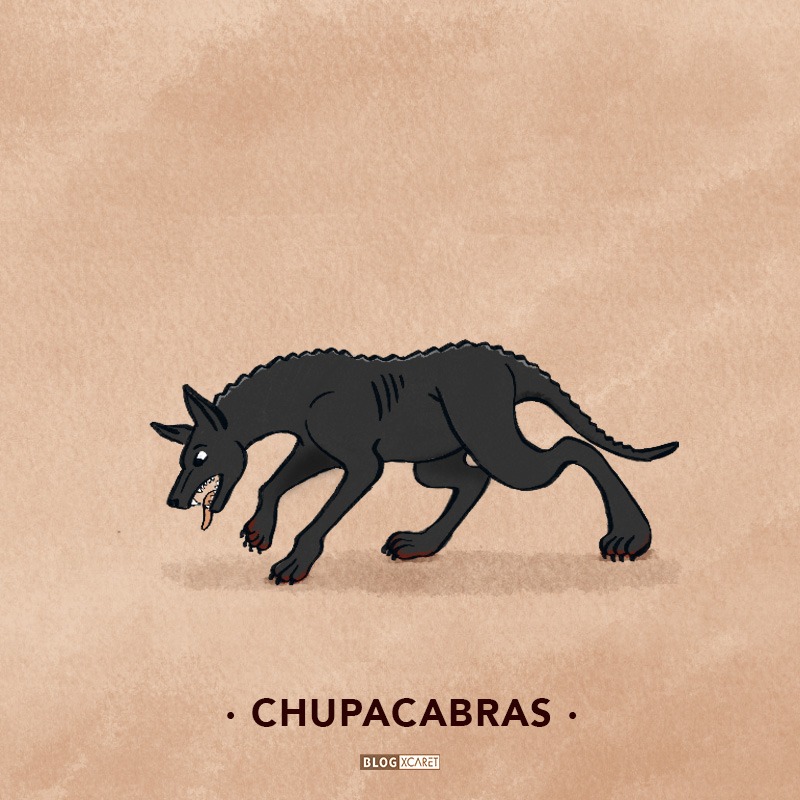
The fear arose when cattle were bitten and woke up with no trace of blood in their organs. This happened in the body of cows, sheep, and goats which seemed to be their favourite. It was feared that perhaps it could cause harm to humans. The creature left bites in the form of an inverted triangle. During the year 1996, 30 sheep appeared dead in Mexico, this began to create urban legends that perhaps there was an alien or a bat that was part of an experiment that went wrong.
Although there were never concrete answers to the incidents at that time, two things were made very clear, the first is that the bats that live in Mexico are vegetarians and their diet is based on fruits, for this reason, the idea of this being the answer was discarded. The second, is perhaps that it was just some mangy animal that was in the area and that the media transformed the story.
The popularity of this being is recognized by many citizens as a probable vampire that has not disappeared. It can be heard in songs and even gave rise to an expression of a political nature. Today, after much research, the experts mention that they may have been coyotes that live in the areas of Sonora and Puebla.
What was your favourite creature?
Did you know any of them?
Discover : Cultural activities in Mexico

Nighttime reader of fairy tales and dragons who likes nature, enjoys adventure and is an enthusiast ...
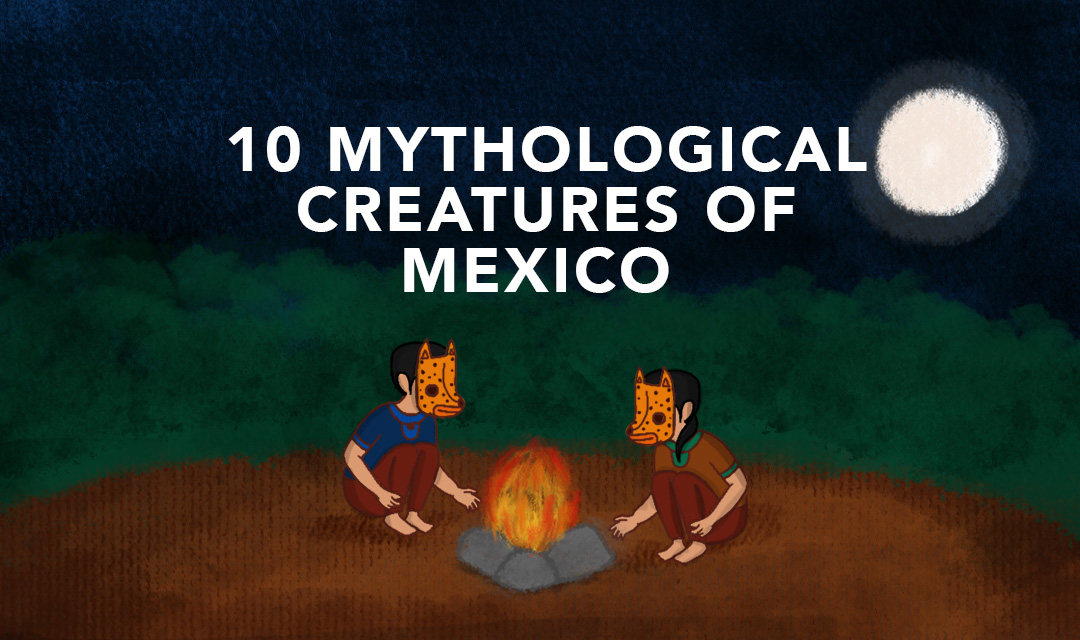
Posts Relacionados
Grupo Xcaret
Hotels
